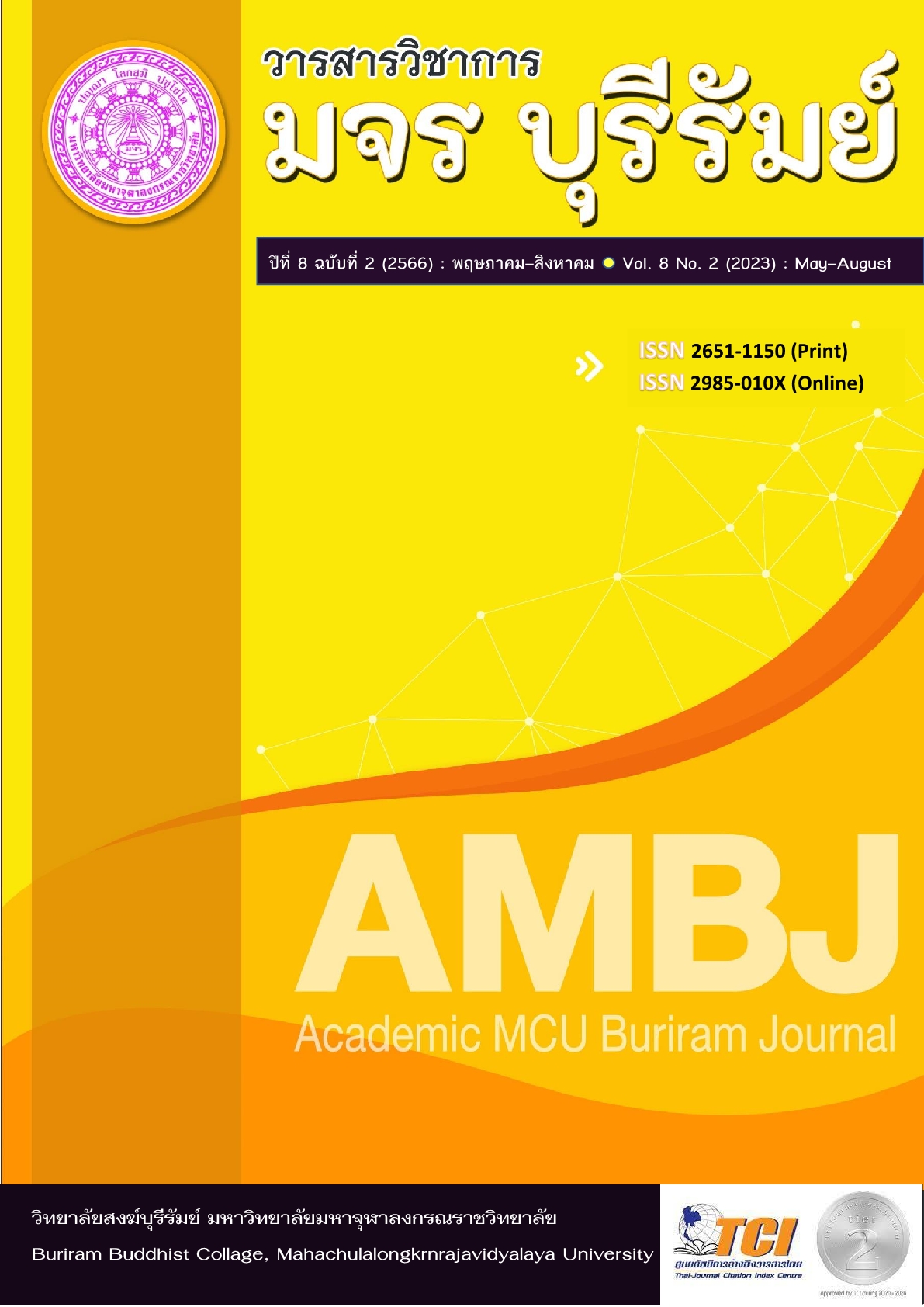A Comparative Study of Paññā Pāramī in Theravada Buddhism and Mahayana Buddhism
Keywords:
Paññā Pāramī, Theravada Buddhism, Mahayana BuddhismAbstract
The purpose of this research were: 1) to study the Paññā Pāramī in Theravada Buddhism, 2) to study the Paññā Pāramī in Mahayana Buddhism and 3) to compare the Paññā Pāramī in Theravada Buddhism and Mahayana Buddhism. This is a qualitative research, focusing on studying and researching documents by surveying primary sources from the Tipitaka, Commentaries and scriptures both Theravada and Mahayana. This research also explores secondary information from academic texts and related documents. Then it is presented by analytical description.
The research result found that:
1. Paññā Pāramī in the Theravada field meant enlightenment, awakening and realization. This was about Bodhisattava to perform meritorious act for enlightenment and preached all creatures. IT the characteristics meaning aimed at Anattā. The concept of Paññā Pāramī in Theravada mentioned to perform meritorious act for many lives. When it was completed, it would enlighten to become the Buddha.
2. Paññā Pāramī in the Mahayana, the word Paramitā philosophy meant the enlightenment in the personal Suñyatā and the Suñyatā Dharma. Both meant the wisdom of knowing the center of all things. This was about Bodhisattava to perform asceticism from the past lives. Having become a Buddha, He would point the way of liberation to all beings til the last day of his death (Nirvāna).
3. The comparative study found that meaning of Paññā Pāramī in Theravada did not define only the Buddha but was available to disciples. For Mahayana, it defined only Bodhisattvas. Paññā Pāramī was divided into 3 levels. But using a different criterion, Theravada Buddhism firstly aimed to practice wisdom to reach the highest destination and then help creatures later. Mahayana would focus on practicing Paññā Pāramī for the benefit of the happiness to creatures. The aim of perform Paññā Pāramī of both group were similarity. Both group performed Paññā Pāramī for Anuttarasammasambodhiñāna and help all creatures.
References
คณะสงฆ์จีนนิกาย. (2531). พระพุทธศาสนามหายาน. กรุงเทพฯ: ธนาคารกรุงเทพพิมพ์เป็นธรรมบรรณนาการ.
พระมหาวิชาญ กำเนิดกลับ. (2549). การศึกษาเชิงวิเคราะห์คัมภีร์โพธิจรรยาวตาร. ศิลปะศาสตรมหาบัณฑิต สาขาวิชาภาษาสันสกฤต ภาควิชาภาษาตะวันออก. บัณฑิตวิทยาลัย: มหาวิทยาลัยศิลปากร.
มหาจุฬาลงกรณราชวิทยาลัย. (2543). พระไตรปิฎกภาษาไทย. กรุงเทพมหานคร: โรงพิมพ์มหาจุฬาลงกรณราชวิทยาลัย.
มหาจุฬาลงกรณราชวิทยาลัย. (2557). อรรถกถา ภาษาไทย. กรุงเทพหานคร: โรงพิมพ์มหาจุฬาลงกรณราชวิทยาลัย.
อภิชัย โพธิ์ประสิทธิ์ศาสต์. (2539). พระพุทธศาสนามหายาน. พิมพ์ครั้งที่ 4. กรุงเทพมหานคร: สภาการศึกษามหามกุฏราชวิทยาลัย.
Downloads
Published
How to Cite
Issue
Section
License
Copyright (c) 2023 Academic MCU Buriram Journal

This work is licensed under a Creative Commons Attribution-NonCommercial-NoDerivatives 4.0 International License.
ทัศนะและความคิดเห็นที่ปรากฏในบทความวารสารฉบับนี้ถือเป็นความรับผิดชอบของผู้เขียนบทความนั้น ไม่ถือเป็นทัศนะและความรับผิดชอบของบรรณาธิการ





